This post has already been read 4502 times!
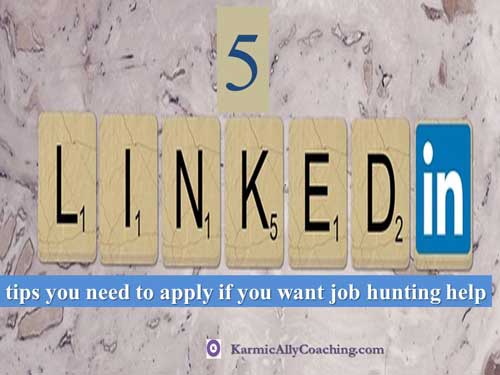
Did you know that LinkedIn was originally meant to have been a platform for job hunters before it became a business platform too?
In fact, I joined LinkedIn way back in 2008 to reconnect with my globally scattered colleagues and create a database of my contacts to keep in touch. In time it became a means of offering mutual support for our lead referrals and enhancing our network.
Since then the network has gone on to include new contacts some of whom are fellow coaches and others with whom there is synergy for mutually beneficial business opportunities. Some of these contacts are now considered friends and our association has moved on to emails and Skype calls to ‘catch up’. Both parties have nurtured the connection.
I was listening to a webinar by JoAnne Funch of Marketing Dish last week and she referred to the choice of nurturing relationships or building a database.
I’m an admirer of Ms Funch and I listen to her and read her guidance very carefully because she is on the money.
JoAnne’s words hit a nerve.
Along the way, I too have found myself become an involuntary member of an online Yellow Pages Directory.
I’ve culled my contacts to contain real people who engage with me –even if it is only to wish me on my birthday or acknowledge my greetings.
The past week, I received 2 LinkedIn invitations where 1 person mentioned their reason to connect was for the purposes of finding a job even though he knew I was not in Executive Search.
Considering he had over 50 connections in common with me who were better equipped for the task, I felt he really should have approached them. As it turned out nobody responded.
Had he cultivated the connections?
The answer was no. I suggested he update his profile and start building relationships with contacts who could get him a job interview.
Then I got another invite from a lady who was looking for a job for a Chartered Accountant friend of hers with 2-years’ work experience and wanted access to my network. She stated as much in her invitation email.
We have 1 mutual connection in common and I told her that he was a better referral fit for her friend. The lady couldn’t recognize the contact until I sent her a link to his profile.
As for me, she hadn’t checked my profile properly and might as well have done a 1 click connection. I have resources for job hunters and gave her a link to share with her friend.
Her response? She’d think about. You can see why I didn’t connect with her.
These 2 experiences and the webinar got me thinking about job hunters and the way they use LinkedIn or even understand the dynamics of this platform.
One of the best ways to open doors for possible job interviews is to get referred for the position but nobody is going to refer a complete stranger.
This holds true in the offline world and is equally important in the online world, whether you are looking for a job or a business referral.
I’ve already written about trusting strangers on LinkedIn and being a savvy networker.
I’ve also explained the finer nuances of job hunting in the online world in my Kindle book 5 Reasons your Job Hun is failing
In this post, I’m going to focus on 5 tips that I can give job hunters on LinkedIn.
Build Relationships even before you need them by making it about them first
In other words, keep in touch and be of service. One of the easiest ways to do this is to share an article or link to one with personalized message to your connection telling them that you thought they might find it interesting.
It serves 3 purposes – keeps you top of mind in case an opportunity comes to their attention, helps get a conversation started and establish your professional presence.
Create a schedule to keep in touch
This is an excellent way to nurture and build relationships. It could be a friendly email every few months to check in or even greet them for a special occasion. LinkedIn makes it easy to do this with their notifications service.
Create a profile that shows you as a professional and as a person, not a cut and paste of your resume
Gone are the days when simply uploading your resume worked. There are lots of talented professionals out there looking for a job and your task is to stand above the noise.
Showcase your talents and skills and if you did something exemplary during your career or school days, like a hobby or passion show it.
One recent example that I can share is from a LinkedIn expert who invited me to connect. I have been following him for the longest while and knew of his expertise.
This time, while I was preparing to respond to his invite, I checked the profile again. I discovered we had both written for our respective school and university newsletters.
Imagine my delight at finding a mutual interest. It also explained why I enjoyed reading his books – he got his experience way back before he joined the workforce!
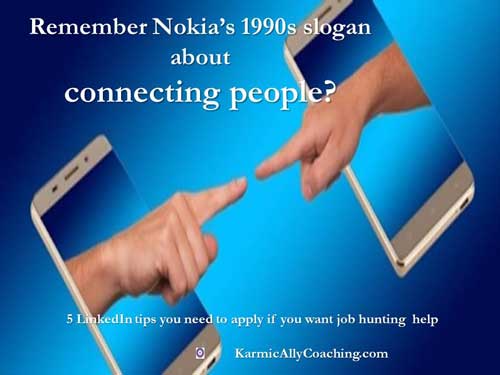
Learn how to ask for a referral for a job
This is where building a relationship earlier helps because the person from whom you are asking for a referral or introduction can easily decline, especially if they don’t know you.
That’s the mistake the 2 job hunters I mentioned earlier made with me and I’m sure with others too, especially the first person.
He simply sent me a message he was looking for a job. His LinkedIn profile was incomplete and he wasn’t willing to get on the phone to talk to me.
A better approach especially when requesting a referral from someone who doesn’t know you that well, write to them with reference to what you have been doing and your current work history and the specific job that you are looking at.
Ask them if they are comfortable giving you a reference. Offer to forward your updated resume so that the referrer has something to work with.
Give them the option to decline if they aren’t comfortable with it.
I remember when I was setting up my credentials as an independent IFRS Consultant, a family friend and colleague approached highly respected Alumnus on my behalf who agreed to see my resume and portfolio of professional work.
He was impressed but had the principle that if he was going to refer anyone, he had to talk to them too. By chance, he was visiting New Delhi. We met up over a cup of coffee and he got a chance to assess me as a professional and ask in detail about my work.
I landed one of the biggest projects I could have envisaged that helped me meet half of my business plan revenue target that year.
You can get more guidance on framing the letter or email in this post from Happy Schools that provides a framework for your referral request. How to Ask a Stranger in LinkedIn for Job Referral
Let your referrer know if someone contacts you
Getting a referral for a job might not lead to getting the job if the hirer doesn’t think you’re a good fit. The fact a potential employer reached out to you based on a recommendation is an important enough event for you to reach out to the referrer. Update them about it.
Thanking them for the introduction has the added benefit that perhaps the referrer can reinforce the recommendation once they know the company is interested.
Besides, it’s good manners and if that introduction doesn’t work out, the referrer might be willing to look out for something better suited to you.
Follow these 5 tips and your job hunt on LinkedIn will lead to better results than you might be having right now.
At the end of the day, it’s all about building relationships and becoming a real human behind a LinkedIn profile.
It can take anywhere between 6-8 months to land the perfect job. Building a viable network instead of a database of strangers is always a better strategy.
Have you ever used LinkedIn to find a job or potential leads?
What advice would you add to these 5 tips?
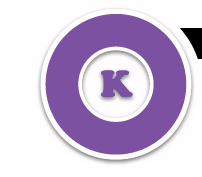
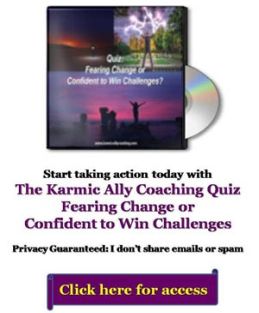
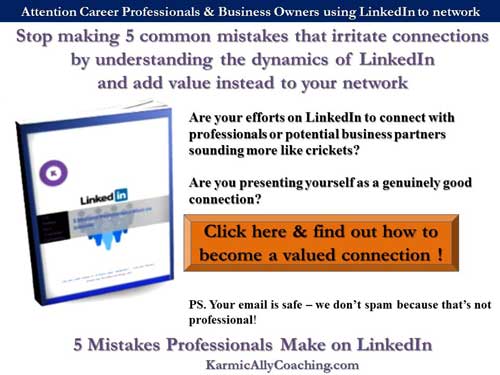
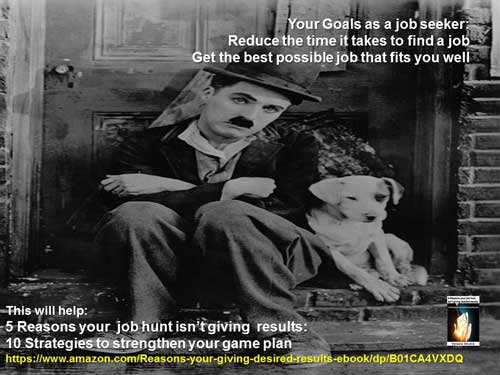
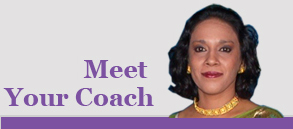
 I adhere to the Certified Coaches Alliance Code of Ethics and Standards. A copy is available on request.
I adhere to the Certified Coaches Alliance Code of Ethics and Standards. A copy is available on request.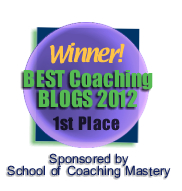
 Let's Talk through the Connect Form:
Let's Talk through the Connect Form:
Very nice Vatsala! Your articles are always engaging and interesting!!
Thanks Sunil. Given your HR Specialization, I’m willing to wager that you get a lot of these types of invites on LinkedIn. 🙂
Always spot on, Vatsala. I especially liked your idea of ‘being of service’ as being something as simple and do-able as sharing a pertinent article. I have heard that advice in the past, but without the example of what that service could be, and I was always put off by imagining it had to be something grand. This makes perfect sense and really strikes the right note. Thank you.
Quite often, Reba, it is the simpler activities that add most value to our connections, like an article that you read about a topic in your industry and send a link or the article itself to the contact. I do it all the time and always receive an acknowledgement and they send me articles too! Delighted I’ve been able to provide the right example to help.
For those of us out of the workforce and not planning to return, this information is still very valuable in terms of building relationships online. We may want to reach out to share information or invite them as guests on a webinar. Or, others are looking at our LinkedIn profile to learn more before doing business with us.
Absolutely, Joyce. Over 80% of people Google a person before doing business with them and for most professionals, if they have a robust LinkedIn Profile, their name would show their LinkedIn profile at the top of the search page. From there the researcher would definitely land on LI and view the profile and if it is a possible match for what they are looking for, even connect or send a message. But it doesn’t stop there. Building relationships enhances the Know, Like and Trust factor that can lead to potential business or even referrals. Thank you for sharing your insights.
Excellent advice Vatsala. Even though I don’t use LinkedIn for job hunting, I have enjoyed the contacts I’ve made through the years. Some have led to business arrangements and others to interviews or guest posts, but they tend to come up organically in conversations, exchanging ideas, etc. I’m glad you included advice on how to ask for a referral because I’ve received a few that were embarrassing and it’s always so awkward to reply and I just can’t make myself ignore a request for help. Thanks!
Thank you Marquita. My experience has been similar to yours. I’m glad you liked the referral asking advice – its a difficult area to handle gracefully when we are helpful by nature but don’t know how to respond.
Long while since I went job seeking and while i know i should look at Linkedin I decided not to spread myself so thinly. These are great tips and reminded me my LI profile needs an update . xxx
I’ve seen that happen a lot with my LinkedIn connections, Suzie. 🙂 There have been times when I have invited an old colleague or sent them a message and then see a lot of their activity which includes profile updates, new connections and notifications of what they have liked. Like a jumpstart to be more active. The best way of managing LinkedIn even if you are not very active there is to schedule a profile update every 6 months to make sure your profile is representing your work and business as it stands. We do develop ourselves as our business develops.
Thank you Vatsala for the mention in your article.
Another tip I would offer is for job seekers to ‘do the research’ before connecting with a prospective employer – know what the company does and be up to date on their news by following their company page on LinkedIn. I would also look up people at the company and look for a possible connection you may have in common to start a conversation to learn more. Lastly, engage by commenting on posts, show your expertise – you never know the opportunities that can arise by actively engaging with people on LinkedIn.
Thank you for the additional guidance, JoAnne. I appreciate you! Researching the prospective employer is a key activity in offline job searches and applies to online searches as well and yet, many professionals forget this step even though LinkedIn provides all the information they need for that first search.
Very interesting read!!! Thank you
You’re welcome, Kassi. Thank you for visiting Karmic Ally Coaching’s Blog.